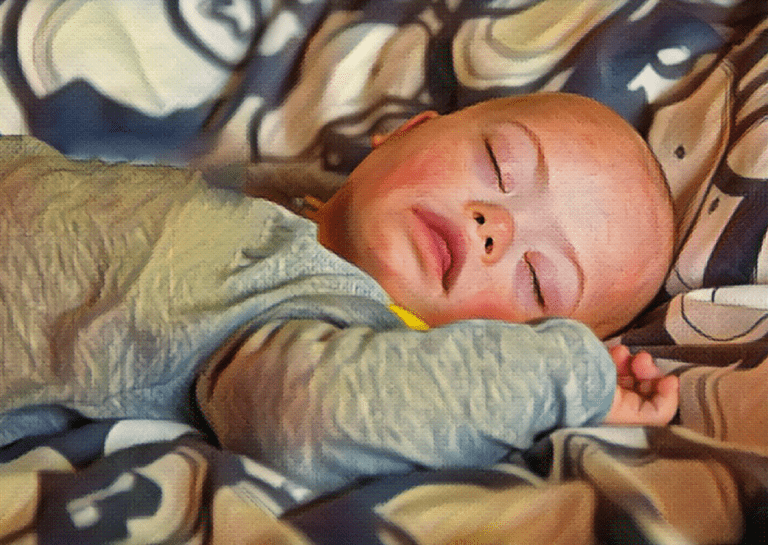Sudden Infant Death Syndrome is the sudden death of an infant under 1 year of age who otherwise appeared healthy. It often occurs while the infant is sleeping in their crib, hence the alternative names ‘cot death’ or ‘crib death’. SIDS is the third leading cause of death in infants aged between 1 month and 1 year.
The cause of death for infants who die of SIDS is unexplainable as it occurs in babies who are seemingly healthy with no other significant health issues. For this reason, it is difficult to determine a definite cause of SIDS. It is a major priority for doctors and parents to focus on prevention.
Some of the most consistent risk factors associated with SIDS are brain defects and infant sleeping positions. The majority of cases of sudden infant death occur in babies who are put to sleep on their side or stomach (prone position) as opposed to their back (supine position). It has also been suggested that brain defects in regions of the brain responsible for controlling breathing and arousal from sleep may contribute to SIDS.
Table of contents
What causes SIDS?
Although much epidemiological research has been dedicated to understanding SIDS, it is not yet clear what causes this syndrome. It is most likely a combination of factors relating to the sleeping environment, prenatal health, and general infant health.
Infant sleeping position has been shown to be a significant factor in the prevalence of SIDS, with this syndrome occurring most frequently in babies who are put to sleep in a prone position. Since this association was discovered, health professionals have emphasized using the supine or non-prone position when putting a baby to sleep.
This is the proposed basis for the racial disparity in cases of SIDS. Statistically, African American parents have been more likely to place an infant in a prone position, which has doubled the risk of SIDS in children of African American descent.
With greater accessibility to information and education on preventing SIDS in the last few decades, the number of infants who die from this syndrome is decreasing.
Risk Factors
Despite there being no definitive cause of SIDS, a number of risk factors have been identified as likely contributors. Research suggests that SIDS occurs not as a result of a single factor, but rather from a combination of 2 or 3 factors.
Epidemiologists have identified a number of risk factors that begin before birth, including inadequate prenatal care and smoking during pregnancy.
Other factors that may contribute to SIDS include:
- Prone sleeping positions
- Exposure to second-hand smoke in early infancy
- Young maternal age
- Low birth weight
- Soft bedding or excess blankets and toys
- Overheating
- Brain defects relating to the control of breathing and waking
- Respiratory infections
- Sharing a bed with parents or siblings
SIDS facts
- SIDS occurs more frequently in male infants
- Premature babies are more likely to die from SIDS because their brains may be less developed, compromising their breathing control
- Infants are most susceptible to SIDS between the ages of 2 and 4 months
- Respiratory infections and associated breathing problems increase the risk of SIDS.
- Infants from families with a history of SIDS are at a greater risk.
- Infants have a higher risk of SIDS if they live in a house with smokers
- Children of mothers under twenty years of age are more susceptible to SIDS
Prevention
By understanding the risk factors associated with SIDS, you can take steps to prevent it and protect your baby’s general health. Take the following precautions to help prevent SIDS.
- Only put your baby to sleep in the supine position (lying on their back), and never on their stomach or lying on their side (prone position). Ensure that anyone who takes care of your baby and puts them down to sleep knows that they should be placed on their back.
- Ensure their bedding isn’t too soft and that there is not an excessive number of blankets or toys. It is best to keep their crib bare and to keep any blankets away from their head.
- Have your baby sleep on their own and in their own crib. Your baby is at increased risk of SIDS when they share a bed with a parent or sibling. It is best to have your baby sleep in their own crib in your bedroom until they are 1 year of age.
- Ensure they don’t get overheated while they are asleep.
- Do not smoke around your baby and do not allow others to do so.
- If you can, breastfeed your baby. Breastfeeding has been shown to lower a baby’s risk of SIDS.
References
Moon, Rachel Y, et al. “Sudden Infant Death Syndrome.” The Lancet, vol. 370, no. 9598, 3 Nov. 2007, pp. 1578–1587., doi:10.1016/s0140-6736(07)61662-6.
“Sudden Infant Death Syndrome (SIDS): Symptoms & Causes: Boston Children’s Hospital.” Boston Children’s Hospital, www.childrenshospital.org/conditions-and-treatments/conditions/s/sudden-infant-death-syndrome-sids/symptoms-and-causes.
“Sudden Infant Death Syndrome (SIDS) (for Parents) – Nemours KidsHealth.” Edited by Floyd R. Livingston Jr. and Mary L. Gavin, KidsHealth, The Nemours Foundation, Feb. 2017, kidshealth.org/en/parents/sids.html.
